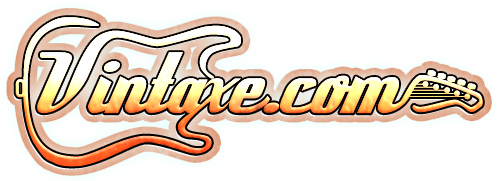
|
|
|
|
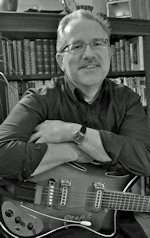 Tony Bacon |
I got the bug when I was about 15 (a long time ago!) and began playing bass in various bands. Nothing famous or well known, but a really enjoyable time. My first bass was an Otwin, bought cheaply from a friend (and I soon found out why). From there I moved upward, only slightly, to a few Gibson and Fender models. Soon after that, I got interested in writing, too, and it became obvious that I was a much better writer than a musician. I have written many books since my first one, The Ultimate Guitar Book, which was published in 1991. Some of my favourites include Million Dollar Les Paul (2008), about the search for the most valuable Burst, Rickenbacker Electric 12-String (2010), which despite the title also covers non-Rick 12 history, and Electric Guitars Design And Invention (2017), where I look at the creative origins of vintage and modern instruments. My website tells me I have written about 20 or so other titles. You can check out my publications at tonybacon.co.uk if you want to know more. Lately, I have slowed down on book work, but I am writing regularly at Reverb (there is an index to my stuff at Reverb News ) and for Guitar Magazine, Guitarist, and Sound On Sound. The VintAxe Catalog Library has been a valuable resource in all my work. It is my first destination whenever I want to look up this or that original catalogue. Long may it run! |
 Phil Brown |
I have been interested in guitars for as long as I can remember. When I was about 6 years old my dad's band practiced in the spare room next to mine. Watching and listening to them on a regular basis certainly helped kindle my interest in playing music. I started actually learning to play guitar around age 13. I have since been involved in various musical projects and played at least 100 live shows. In July 2007 I officially joined Vintaxe as a contributor and have been helping to keep the site updated and build on our already vast collection of material. |
 Steve Brown |
I bought my first bass guitar in 1972, a used red Fender Musicmaster. I had taken guitar lessons as a preteen using my sister's redburst Stella acoustic so I knew the basics of chords and scales. When a friend of mine said I could play bass in his band if I would buy an instrument, I jumped at the chance. I really didn't get interested in vintage guitars until a friend of my fathers died and left me his 1955 Gibson L5 archtop guitar. What a way to start a collection! Because the L5 was severely damaged, I was forced to begin learning about places to find vintage parts and vintage guitar repair. Sources of information were tough to come by in the late 70's, what a difference the Internet makes. I didn't actually collect many guitars during the 80's since I tended to sell one of my current guitars or basses in order to pay for the next one. I sure would like to have a few of those instruments I let go during that period back today.
It wasn't until my son began playing guitar in the early 90's that I began accumulating a few guitars. Combing all the local music shops looking for Phil's first guitar made me realize how expensive American made guitars had become. As I looked for budget alternatives, I was surprised to find all the interesting import guitars of the 60's and 70's that could still be obtained at reasonable prices. Of course, I wound up buying Phil a new American made guitar since he was convinced there was no substitute for "Made in USA". I only have myself to blame. My interest in non-mainstream instruments blossomed into addiction once my friend Don introduced me to Internet shopping, especially eBay. The number of cool vintage import guitars and basses on parade was truly mind-boggling and I quickly developed a very dangerous wish list of coveted instruments. This list was fed by great publications like Bizarre Guitars of the 60's and my emerging interest in guitar manufacturers catalogs of the 60's and 70's. Unlike Paul, I have yet to be rehabilitated, in fact, I'm afraid that my habit is continuing to grow. Any of you that know the thrill of hearing the squeaky brakes of the UPS truck pulling up in front of your house know exactly what I'm talking about. Happy hunting, it's what people are designed to do you know. |
 Zachary Fjestad |
I received my first guitar, Washburn Festival Series Acoustic Model EA-36, as a Christmas Present in 1993 from my uncle. There was only one stipulation: I had to learn at least three Holiday songs by next Christmas in order for me to keep the instrument. I started taking lessons that summer and by the winter not only had I learned my three Christmas songs, I was already into playing tablature by many of the popular grunge bands of the early 1990s. Since then, I have continued to teach myself new chords, techniques, etc. on the guitar and have played in a few bands along the way.
My uncle, S.P. Fjestad is the author and publisher of the Blue Book of Gun Values. In the late 1980s, he saw a need to publish a book on vintage guitars. In 1993, the First Edition of the Blue Book of Guitar Values was published. In 1996, at age 14, I attended my first NAMM show in Nashville, TN; my life would be ever changed since then. Against most of my mother’s requests, I attended several guitar shows throughout my high school days and I would try to attend as many as I could during summer vacations. I graduated from high school in 2000 and moved to Minneapolis to attend the University of Minnesota. I started working in the shipping department at Blue Book Publications and after the current author of the Blue Book of Acoustic Guitars and Blue Book of Electric Guitars left in 2001, things changed in a hurry as I became the number one candidate. I took a semester off of school and wrote the First Edition Blue Book of Guitar Amplifiers that was published in Fall, 2002. From then until 2005, when I graduated college with a degree in Scientific and Technical Communication, I wrote the Eighth and Ninth Editions Blue Book of Acoustic Guitars and Blue Book of Electric Guitars. Currently, I manage both guitar databases, a guitar amplifier database, and I am working on a database for bluegrass instruments (mandolins, banjos, dobros, etc.). I also write a monthly article for Premier Guitar entitled Trash or Treasure. |
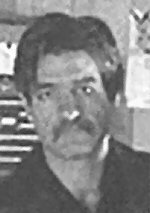 Scott Freilich |
I moved to Buffalo in 1971 to study electrical engineering at U.B. During college, I played the clubs around campus with several acts, the most notable of which was Trigger Happy featuring keyboardist extraordinaire Trigger Douglas Gaston. When local gigging blossomed into touring, I realized that being a touring musician and being married were not compatible, so I decided to concentrate my efforts on guitar repair, a skill I had been developing since high school.
Around this time, there was growing interest in older vintage guitars. During the 70's, most of the major guitar manufacturers were producing the worst junk they ever made so most of my musician friends were using instruments made prior to 1965. Buffalo had a wealth of these instruments since the town was a happening place in the 60's. While vintage guitars were becoming more valuable in the major cities, in Buffalo, they were still just perceived as used gear. I quickly realized I could buy vintage guitars locally and sell them at a tidy profit to out of town dealers. After establishing a network of dealer connections, a partner and I opened Top Shelf Music in 1979. Over the years, my reputation as an expert on vintage guitars and guitar repair has become well established. I currently write a monthly column called Oddballs for 20th Century Guitar magazine, and serve on the committee that creates the Vintage Guitar Price Guide. Samples of my work are present in many books on guitar repair and vintage instruments such as Epiphone: The House of Stathopoulo, The Beauty of the Burst, Gretsch: The Guitars of the Fred Gretsch Company, and Washburn: 100 Years of Fine Instruments. In 2004, I was inducted into the Buffalo Music Hall of Fame in recognition of my contributions to the music scene in western New York. I currently perform with The Headers, a hot rod band featuring the award-winning guitarist from The Road, Bobby Lebel. It is my intention to continue to enjoy performing music locally, and to provide exemplary service to my local, regional, and national clients through Top Shelf Music. |
 Paul Grubich |
I started out by wanting one unusual guitar to hang over my stereo system. I have always loved guitars and watching good guitar players so I began my search at a local music store owned by a cool cat named Bill. I told Bill what I wanted and he knew exactly what to show me. Now this was very early in the Bizarre guitar movement and the book Bizarre Guitars had just been published. Anyway Bill showed me a strange guitar with green body and chrome everywhere. I was amazed at the buttons and rocker switches. It was love at first sight when I saw that surf green monster and best of all it was only 50 bucks!
Having acquired my wall hanger, you would think I would quit, right? No, that damn book Bizarre Guitars made me buy it and I was a goner from then on. My wife and I spent many years combing pawn shops and old music stores looking for these lost treasures. They were cheap back then and most music stores were happy to get rid of them. As my collection grew so did my desire for more exotic wacky wood, and then I saw my first fiberglass guitar, watch out. My first fantastic plastic was a National Newport 84 I found in a box in the basement of my favorite music store. It was cool and it was surf green so I spent the next several years finding the parts to restore it to glory; it now is the pride of my collection. After many years collecting I quit cold. I had way more guitars than anyone needed and if I didn't stop I would have been forced to rent a warehouse! To me, these orphans of the music world are expressions of design more than anything else. They are designed to have their own look and they project their own personalities. I like them because they are over the edge, out of the mainstream and make me smile. Of course the way they make my musical friends nervous is also a great treat! |
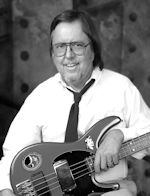 Willie G Moseley |
In the spring of 1989, we had just found out that the Missus was (finally) pregnant. Figuring our lifestyle would change drastically once our offspring was born (which, of course, it did) I opted travel to the state to our right to attend what was billed as the “Atlanta Guitar Show” at the Omni coliseum. I had already dabbled in buying a few old American made guitars from pawn shops, and wanted to see what a convergence of like minded hobbyists and/or players would reveal. As I suspected ahead of time, the majority of attendees seemed to be Baby Boomers like me. For us, such instruments were (and still are) “time warp machines,” recalling times when oh-so-many of us bashed cheap guitars in garage bands.
While there, I happened to pick up a 16 page, fold over newsprint publication called the National Music Trader, out of Bismarck, North Dakota, of all places. For some reason I could not explain, I had already been typing out thoughts about guitars and music in the last year or so. Maybe such activity had something to do with the Missus buying me a new portable typewriter in late 1988. I sent a few essays to Bismarck. They clicked, and I have been onboard with the periodical ever since. The Omni in Atlanta is no more, but the National Music Trader has evolved to become Vintage Guitar Magazine, with tens of thousands of subscribers around the world. Its format is also now larger, with full-color slick-print issues that total around 150 pages per month. And one ongoing facet of the vintage guitar phenomenon is the effort to keep information about classic instruments active; i.e., just because it is “old” and/or “rare” and/or “American-made” and/or “discontinued,” that does not mean it is “valuable” or “collectible.” So I am grateful there is a source like www.vintaxe.com as a resource for classic catalog images. I have lost count of the number of times I have logged onto the VintAxe Catalog Library in search of a particular brand and model, and I’ve usually been successful with such quests. Another facet of the “old guitar phenomenon” that will hopefully evolve will be the interest of generations younger than Boomers in classic examples of fretted or fretless Americana. There are some kids who appreciate guitars that are “old and cool,” but we need even more younger participants. Cross your fingers. |
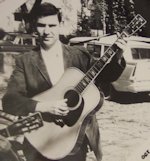 Dave Portman |
I
I I |
 Heinz Rebellius |
I grew up in an American influenced region of Germany near a US Airbase. Exposure to American music of the 60's inspired me to buy my first guitar, an old Hofner steel string so I could jam to Neil Young's Down by the River and Ohio. Since this initial purchase, I've tended to go through guitars like underwear. However a few instruments that I will never part with include my beloved Martin HD-28, a Telecaster I assembled myself, a Dick Dyckman Telecopy, and several PRS guitars. My current basses include an Epiphone Jack Casady, a PRS and a Reverend Rumblefish.
After touring Europe and America in the late 80's and early 90's with my band Cliff Barnes & the Fear of Winning I decided to settle down and start a new career as a music journalist and publisher. I have founded two German music magazines named SOLO and AKUSTIK GITARRE, and I've also run a vintage guitar shop named GUITARDOME. Since 2000, I've served as an editor for Germany´s best selling guitar magazine GITARRE & BASS. I continue to pursue my musical interests with my band MEMPHIS and an American Folk inspired project called SEHNSUCHT NACH DER FERNE (Desire for Distance), to tell the story of a 15 year old family ancestor that emigrated from Germany to America in 1892. |
 Don Thompson |
My first guitar was a Teisco E-110 that a childhood friend picked up at a Western Auto and that I acquired in a long forgotten trade. This was soon replaced with a green sunburst Kimberly with 4 pickups. Since I was 16 at the time these choices were based on price and availability as I had no car and my single source of income was a Grit route. As I acquired better quality instruments, cars and debt, the Teisco and Kimberly disappeared. And good riddance, right?
When Steven first started collecting bizarre guitars I was inspired on several levels to begin filling my own house with these one time outcasts. Why have I stuffed a small room with garage-band fodder? 1) I have a collecting disease and my weekly trips to Steven's studio where his growing collection is housed was a severe temptation. There's just something about a group of like items that's like a drug to a collector. 2) I cut my teeth on cheap Japanese guitars as a puppy so there was certainly a nostalgic factor in play. Seeing some of my old friends again brought back the same wave of warmth that the scar on a G.I. Joe's cheek or the green apple on a Beatle's 45 can produce. 3) I enjoy having a variety of feels and sounds at my disposal. Songs just drip out of 'em. 4) They just look wonderful. They suggest bubble cars on the moon, medieval weaponry, tail fins, Johnny Lightnings, surfing, James Bond and laser guns. |
Copyright © 2000 - 2026 VintAxe.com Vintage Guitars All Rights Reserved.